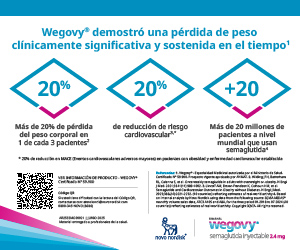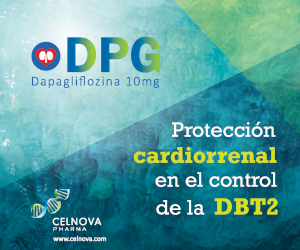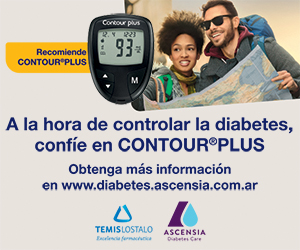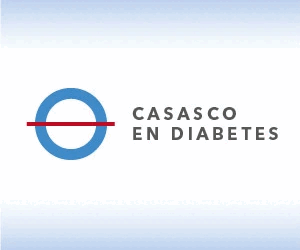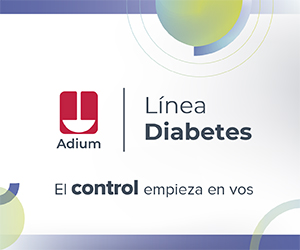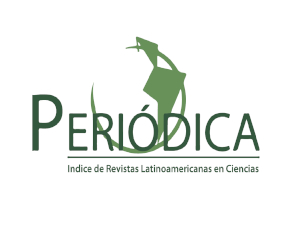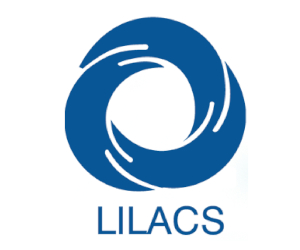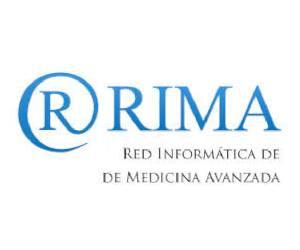Reliability and validity analysis of the Spanish version of the Diabetes Quality of Life (EsDQoL) questionnaire in adults with diabetes mellitus undergoing insulin treatment at a General Acute Care Hospital in the Autonomous City of Buenos Aires
DOI:
https://doi.org/10.47196/diab.v59i2.1169Keywords:
quality of life, diabetes mellitus, Diabetes Quality of Life (DQoL), validation, ArgentinaAbstract
Introduction: diabetes mellitus (DM) is a chronic disease that affects health-related quality of life (HRQoL). The “Diabetes Quality of Life” (DQoL) questionnaire has been widely used to assess this impact. Its Spanish version (EsDQoL) has demonstrated satisfactory psychometric properties, although it is necessary to verify its validity in the local context.
Objectives: to analyze the reliability and validity of the Spanish version of the EsDQoL in adults with DM undergoing insulin treatment, attended at a general acute care hospital in the Autonomous City of Buenos Aires (CABA), Argentina.
Materials and methods: an observational, prospective, and validation study was conducted on individuals over 18 years of age with DM on insulin treatment, without associated complications. Two quality of life measurement instruments were administered: the EsDQoL and the Short Form-12 (SF-12), in a specialized clinic of a general acute care hospital in CABA, Argentina, during 2022–2024. HRQoL was measured using the EsDQoL and compared with the SF-12 for criterion validity. Correlations, internal consistency (Cronbach’s alpha), and test-retest reliability (intraclass correlation coefficient, ICC) were analyzed. Construct validity was evaluated by comparing EsDQoL scores according to age, health coverage, HbA1c, type of treatment, and physical activity.
Results: 83 individuals participated, of which 52 were women (62.6%) and 31 men (34.7%), with an average age of 52.8 years (14.2). Regarding the type of DM, 59 participants (71%) had DM2, with a mean disease duration of 12.7 years (8.9). Regarding the treatment regimen, 57 patients (68.7%) were treated conventionally, with an average duration of 8.2 years (6.3). In the reliability analysis, positive correlations were found for the dimensions and the total score of the EsDQoL (rho=0.43-0.79) and internal consistency coefficients from acceptable to excellent (0.64-0.90). A moderate correlation was observed between the total scores of the EsDQoL and the SF-12 (rho=0.64; p<0.001). Regarding construct validity, statistically significant differences were found in age, health coverage, HbA1c, type of treatment and physical activity (p<0.05).
Conclusions: the EsDQoL demonstrated adequate reliability and validity for measuring quality of life in people with DM undergoing insulin treatment. The Social/Vocational Concern dimension exhibited lower stability, attributable to its subjective nature. These findings reinforce the utility of the EsDQoL in clinical practice and future research, highlighting the influence of individual and contextual factors.
References
I. Urzúa A. Calidad de vida relacionada con la salud. Elementos conceptuales. Rev Med Chile 2010 Mar;138(3):358-65. doi: 10.4067/S0034-98872010000300017.
II. World Health Organization. The World Health Organization Quality of Life assessment (WHOQOL). Position paper from the World Health Organization. Soc Sci Med 1995 Oct;41(10):1403-9. doi: 10.1016/0277-9536(95)00112-k.
III. Patrick D, Erickson P. Health status and health policy. Quality of life in health care evaluation and resource allocation. Econ Med 1993. Disponible en: https://www.semanticscholar.org/paper/Health-Status-and-Health-Policy%3A-Quality-of-Life-in-Patrick-Erickson/85dd40bc8f4706737679a9c36371b373b7e987b8.
IV. Guyatt GH, Bombardier C, Tugwell PX. Measuring disease-specific quality of life in clinical trials. CMAJ 1986;134(8):889-95.
V. Jacobson AM, De Groot M, Samson JA. The evaluation of two measures of quality of life in patients with type I and type II diabetes. Diabetes Care 1994 Apr;17(4):267-74. doi: 10.2337/diacare.17.4.267.
VI. Sánchez-Lora FJ, Téllez-Santana T, Gijón-Trigueros A. Instrumentos específicos de medida de la calidad de vida relacionada con la salud en la diabetes mellitus tipo 2 disponibles en España. Rev Clin Esp 2010;135(14):658-64. doi: 10.1016/j.medcli.2009.04.029.
VII. The DCCT Research Group. Reliability and validity of a diabetes quality-of-life measure for the Diabetes Control and Complications Trial (DCCT). Diabetes Care 1988 Sep;11(9):725-32. doi: 10.2337/diacare.11.9.725.
VIII. Reviriego J, Millan MD, Millan M. Evaluation of the diabetes quality-of-life questionnaire in a Spanish population. An experience of translation and reliability. Pharmacoeconomics 1996 Dec;10(6):614-22. doi: 10.2165/00019053-199610060-00007.
IX. Millán MM, Reviriego J, Del Campo J. Reappraisal of the Spanish version of the Diabetes Quality of Life questionnaire (EsDQOL). Qual Life Res 2002 Oct;49(10):322-4. doi: 10.1016/S1575-0922(02)74482-3.
X. Aalto AM, Uutela A, Aro AR. Health-related quality of life among insulin-dependent diabetics: disease-related and psychosocial correlates. Patient Educ Couns 1997;30:215-25. doi: 10.1016/s0738-3991(96)00963-9.
XI. Hahl J, Hämäläinen H, Sintonen H, Simell T, Arinen S, Simell O. Health-related quality of life in type 1 diabetes without or with symptoms of long-term complications. Qual Life Res 2002;11:427-36. doi: 10.1023/A:1015684100227.
XII. Wikby A, Hornquist JO, Stenstrom U, Andersson PO. Background factors, long-term complications, quality of life and metabolic control in insulin-dependent diabetes. Qual Life Res 1993;2:281-6. doi: 10.1007/bf00434799.
XIII. Timashkov AY, Abrosimov IN, Yaltonsky VM. Illness perception and self-management in patients with type 2 diabetes. arXiv 2023. doi: 10.48550/arXiv.2312.10122.
XIV. Koopmanschap M; CODE-2 Advisory Board. Coping with type 2 diabetes: the patient’s perspactive. Diabetologia 2002 Jul;45(7):S18-S22. doi: 10.1007/s00125-002-0861-2.
XV. Mata-Cases M, Roset-Gamisans M, Badia-Llach X, Antoñanzas-Villar F, Ragel-Alcázar J. Impacto de la diabetes mellitus tipo 2 en la calidad de vida de los pacientes tratados en las consultas de atención primaria en España. Atención Primaria 2003;31(8):493-499. doi: 10.1016/S0212-6567(03)70722-7.
XVI. Jacobson AM. The psychological care of patients with insulin-dependent diabetes mellitus. N Engl J Med 1996;334(19):1249-1253. Doi: 10.1056/NEJM199605093341907.
XVII. Ruiz MA, Pardo A. Calidad de vida relacionada con la salud. Definición y utilización en la práctica médica. Pharmacoeconomics Spanish Res Artic 2005;2(1):31-43. doi: 10.1007/BF03320897.
XVIII. Sociedad Internacional para el Avance de la Cineantropometría. Normas internacionales para la valoración antropométrica. Manual 2001. Disponible en: https://uniclanet.unicla.edu.mx/assets/contenidos/275120230526152829.pdf.
XIX. Organización Mundial de la Salud. El estado físico. Uso e interpretación de la antropometría (informe de un comité de expertos de la OMS). Serie de Informes Técnicos Nº 854). 1995. Recuperado de https://www.who.int/es/publications/i/item/9241208546.
XX. The DCCT Research Group. Diabetes Control and Complications Trial (DCCT): Results of feasibility study. Diabetes Care 1987;10(1):1-19. doi: 10.2337/diacare.10.1.1.
XXI. Robles-García R, Cortázar J, Sánchez-Sosa JJ, Páez-Agraz F, Nicolini-Sánchez H. Evaluación de la calidad de vida en diabetes mellitus tipo II: propiedades psicométricas de la versión en español del DQOL. Psicothema 2003;15(2):247-52. Disponible en: https://www.psicothema.com/pdf/1053.pdf.
XXII. Glasgow RE, Ruggiero L, Eakin EG, Dryfoos J, Chobanian L. Quality of life and associated characteristics in a large national sample of adults with diabetes. Diabetes Care 1997;20(4):562-67. doi: 10.2337/diacare.20.4.562.
XXIII. Stewart AL, Hays RD, Wells KB, Rogers WH, Spritzer KL, Greenfield S. Long-term functioning and well-being outcomes associated with physical activity and exercise in patients with chronic conditions in the Medical Outcomes Study. J Clin Epidemiol 1994 Jul;47(7):719-30. doi: 10.1016/0895-4356(94)90138-4.
XXIV. Pate RR, Pratt M, Blair SN, Haskell WL, Macera CA, Bouchard C, et al. Physical activity and public health. A recommendation from the Centers for Disease Control and Prevention and the American College of Sports Medicine. JAMA 1995 Feb 1;273(5):402-7. doi: 10.1001/jama.1995.03520290054029.
XXV. Cai H, Li G, Zhang P, Xu D, Chen L. Effect of exercise on the quality of life in type 2 diabetes mellitus: a systematic review. Qual Life Res 2017;26:515-30. doi: 10.1007/s11136-016-1481-5.
XXVI. Ambelu T, Teferi G. The impact of exercise modalities on blood glucose, blood pressure and body composition in patients with type 2 diabetes mellitus. BMC Sports Sci Med Rehabil 2023;15:153. doi: 10.1186/s13102-023-00762-9.
XXVII. De Souza MA, Freire de Freitas RWJ, de Lima LS, dos Santos MA, Zanetti ML, Damasceno MMC. Health-related quality of life of adolescents with type 1 diabetes mellitus. Rev Lat Am Enfermagem 2019;27:e3210. doi: 10.1590/1518-8345.3210.3210.
XXVIII. Svedbo-Engström M, Leksell J, Johansson UB, Borg S, Palaszewski B, Franzén S, et al. Health-related quality of life and glycaemic control among adults with type 1 and type 2 diabetes a nationwide cross-sectional study. Health Qual Life Outcomes 2019;17:141. doi: 10.1186/s12955-019-1212-z.
XXIX. Lin CY, Lee TY, Sun ZJ, Yang YC, Wu JS, Ou HT. Development of diabetes-specific quality of life module to be in conjunction with the World Health Organization quality of life scale brief version (WHOQOL-BREF). Health Qual Life Outcomes 2017;15:167. doi: 10.1186/s12955-017-0740-x.
XXX. Pouwer F, Hermanns N. Insulin therapy and quality of life. A review. Diabetes Metab Res Rev 2009 Sep;25 Suppl 1:S4-10. doi: 10.1002/dmrr.981.
XXXI. Gupta J, Kapoor D, Sood V. Quality of life and its determinants in patients with diabetes mellitus from two health institutions of Sub-himalayan region of India. Indian J Endocrinol Metab 2021;25(3):211-19. doi: 10.4103/ijem.IJEM_1_21.
Downloads
Published
Issue
Section
License
Copyright (c) 2025 on behalf of the authors. Reproduction rights: Argentine Society of Diabetes

This work is licensed under a Creative Commons Attribution-NonCommercial-NoDerivatives 4.0 International License.
Dirección Nacional de Derecho de Autor, Exp. N° 5.333.129. Instituto Nacional de la Propiedad Industrial, Marca «Revista de la Sociedad Argentina de Diabetes - Asociación Civil» N° de concesión 2.605.405 y N° de disposición 1.404/13.
La Revista de la SAD está licenciada bajo Licencia Creative Commons Atribución – No Comercial – Sin Obra Derivada 4.0 Internacional.
Por otra parte, la Revista SAD permite que los autores mantengan los derechos de autor sin restricciones.





